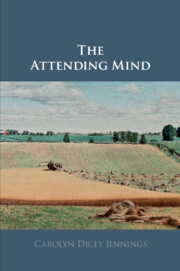Book contents
- Frontmatter
- Contents
- Acknowledgements
- 1 Introduction
- 2 The Philosophical Landscape on Attention
- 3 Attention, Mental Causation, and the Self
- 4 Attention, Perception, and Knowledge
- 5 Attention, Consciousness, and Habitual Behavior
- 6 Attention, Action, and Responsibility
- 7 Conclusion
- Appendix A Mental Causation and Its Problems
- Appendix B The Conceptual History of Top-Down Attention
- Appendix C Top-Down Attention and the Brain
- Appendix D Working Memory and Attention
- References
- Index
- References
References
Published online by Cambridge University Press: 14 February 2020
- Frontmatter
- Contents
- Acknowledgements
- 1 Introduction
- 2 The Philosophical Landscape on Attention
- 3 Attention, Mental Causation, and the Self
- 4 Attention, Perception, and Knowledge
- 5 Attention, Consciousness, and Habitual Behavior
- 6 Attention, Action, and Responsibility
- 7 Conclusion
- Appendix A Mental Causation and Its Problems
- Appendix B The Conceptual History of Top-Down Attention
- Appendix C Top-Down Attention and the Brain
- Appendix D Working Memory and Attention
- References
- Index
- References
- Type
- Chapter
- Information
- The Attending Mind , pp. 218 - 246Publisher: Cambridge University PressPrint publication year: 2020



